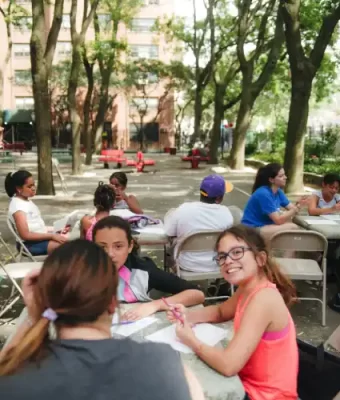

Story of Place
Various groups of people were consulted with in order to ensure as many voices as possible were heard. Individuals such as the chief, women, those with disabilities, police, security and children were identified as just some of the key stakeholders in Blocks 1 and 2. Chief Hafoka revealed how the coastline of Ohonua has eroded approximately 10 metres in 20 years. He voiced his frustration about how climate-related issues such as this, as well as appropriate drainage for heavy rainfall, have not been properly addressed. Specifically in the case of drainage, were addressed through international banks, however, due to the lack of community consultation when implementing such schemes, the drainage solution was illsuited, and lacks community-based maintenance schemes that are detrimental to the longevity of infrastructure investments. The same challenges were outlined by the women of the community who were able to identify key areas of focus in Block 1 and 2. A story of pivotal importance to this placemaking strategy is that of the Otumatafena gardening group, a group of children who partake in the planting of tsunami-resilient nature. This group was formed as a means of connecting children from different church groups who may have been previously isolated, encouraging them to work together to achieve a common purpose.

Place Strategy
- Placemaking as a mitigation and adaptation strategy to climate emergency challenges, including building community resilience, lowering risk factors and minimising damage. As highlighted by the Story of Place analysis, this strategy recognises the vulnerable position ‘Eua is in, being a small Pacific Island, and the disproportionate climate change effects it experiences, and therefore requires strategies that strengthen resilience and mitigation capacity.
- Placemaking as an empowerment strategy for local community, to enable strong community-council partnerships for improved decision making. Previous climate change resilience interventions such as drainage infrastructure experienced mixed success due to the lack of consultation with community. Thus, a priority for this strategy is to empower local community
to negotiate their own outcomes with a strong focus on self-determinism. - Placemaking as an enabler of representation of the multitude of community perspectives and voices, fostering respect and enabling integration with culture, including marginalised voices. Integral to placemaking is a place-based approach that identifies, highlights and celebrates the culture, history and traditions of the space the strategy is enacted upon. Fostering cultural representation has implications for the continued legacy of community and can further improve social and economic outcomes.

Place Activation Plan
Foster community engagement and ownership of the foreshore and residential areas through placemaking initiatives.
Utilise place-making to engage a diverse range of stakeholders, ensuring inclusive and sustainable community
Develop and propose feasible ideas for enhancing the foreshore area that align with community needs and sustainability goals.
Tactical Placemaking Project/ Acupuncture: The Catalyst Project for ‘Eua, focused on rapidly transforming specific areas within Ohonua to demonstrate the potential of placemaking and foster community engagement. This project emphasized low-cost, highimpact interventions that can be implemented quickly to create visible changes and generate momentum for longerterm initiatives.












